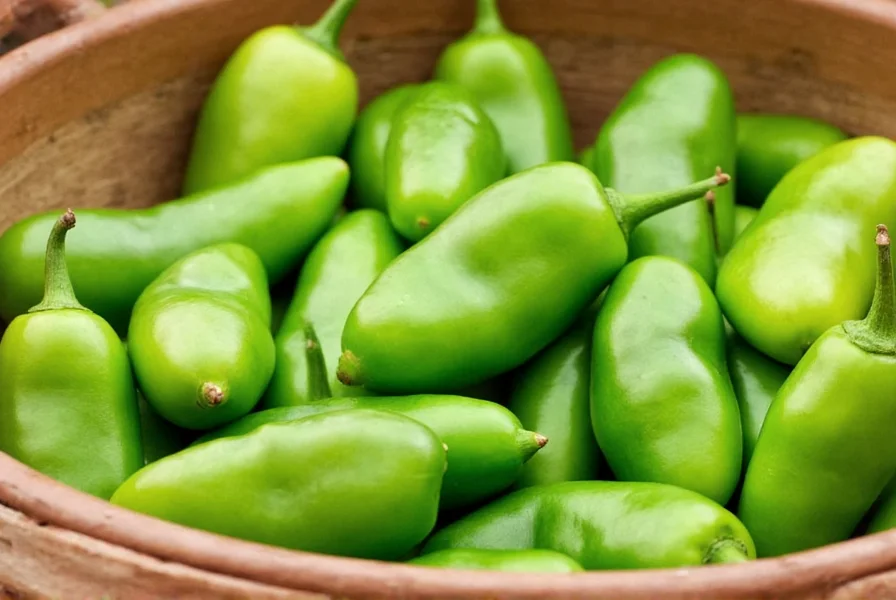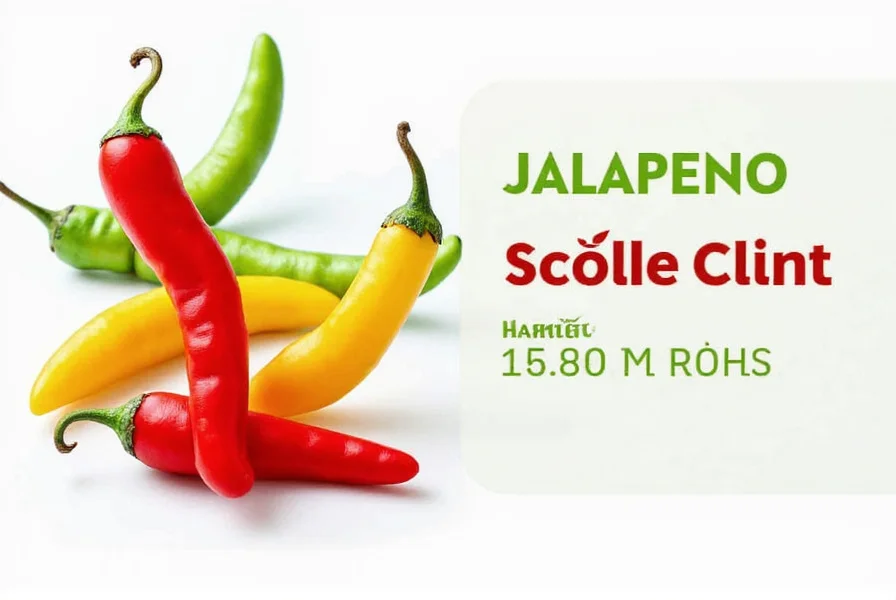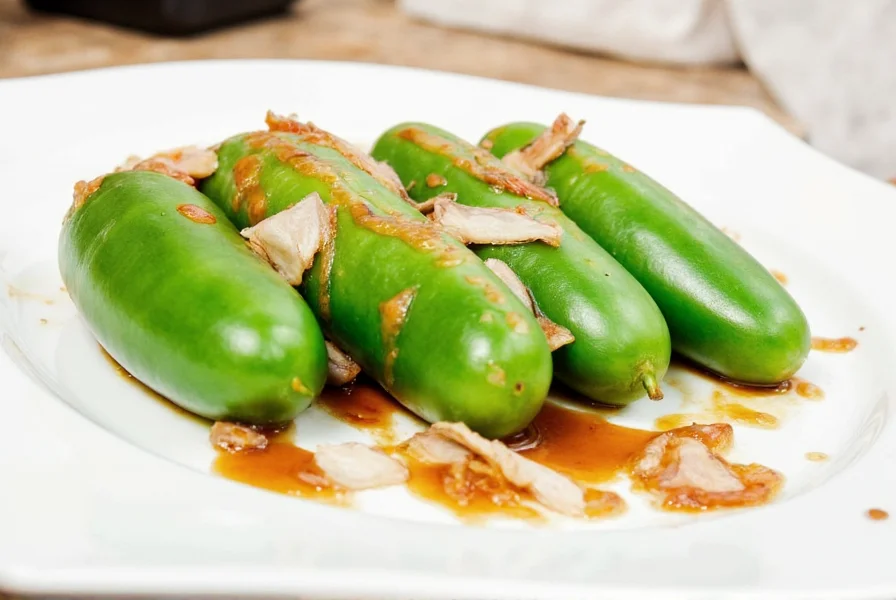If you've ever wondered about the precise heat level of jalapeños, you're not alone. These popular peppers sit comfortably in the middle of the Scoville scale, making them accessible for most palates while still providing that characteristic kick many enjoy. Understanding jalapeño pepper heat level Scoville measurements helps home cooks, gardeners, and spice enthusiasts make informed decisions about their culinary creations.
Understanding the Scoville Scale
Developed by pharmacist Wilbur Scoville in 1912, the Scoville scale measures the pungency or 'heat' of chili peppers and other spicy foods. The measurement is expressed in Scoville Heat Units (SHU), which represent how much capsaicin—the compound responsible for spiciness—exists in the pepper.
The original Scoville Organoleptic Test involved diluting pepper extract in sugar water until the heat became undetectable to a panel of tasters. Today, high-performance liquid chromatography (HPLC) provides more precise measurements of capsaicinoids, though results are still converted to Scoville units for consumer understanding.
Jalapeño Pepper Heat Range Explained
While the standard range for jalapeños is 2,500-8,000 SHU, several factors influence where an individual pepper falls within this spectrum:
- Ripeness: Green jalapeños tend to be milder, while red (fully ripe) jalapeños often pack more heat
- Growing conditions: Soil quality, climate, and water stress affect capsaicin production
- Genetic variation: Different jalapeño cultivars have varying heat potentials
- Seed and membrane content: The white pith and seeds contain most of the capsaicin
| Pepper Variety | Scoville Heat Units (SHU) | Relative Heat Level |
|---|---|---|
| Bell Pepper | 0 SHU | Mild |
| Jalapeño | 2,500-8,000 SHU | Mild-Medium |
| Serrano | 10,000-23,000 SHU | Medium-Hot |
| Habanero | 100,000-350,000 SHU | Very Hot |
| Carolina Reaper | 1,400,000-2,200,000 SHU | Extremely Hot |
How Jalapeños Compare to Other Common Peppers
Understanding jalapeño scoville scale range becomes more meaningful when compared to other peppers. A jalapeño is approximately:
- 10-40 times hotter than a bell pepper (0 SHU)
- About half as hot as a typical serrano pepper (10,000-23,000 SHU)
- 12-140 times milder than a habanero (100,000-350,000 SHU)
- Nearly 200 times milder than the world's hottest peppers like the Carolina Reaper
This moderate heat level explains why jalapeños remain one of the most popular chili peppers worldwide—they provide noticeable heat without overwhelming most palates.

Factors Affecting Jalapeño Heat Levels
Several elements contribute to why two jalapeños from the same plant might have different heat levels:
Environmental Stressors: Peppers produce more capsaicin when stressed by factors like inconsistent watering, temperature fluctuations, or nutrient deficiencies. This evolutionary adaptation deters pests while attracting seed-dispersing birds.
Ripening Process: As jalapeños mature from green to red, their heat typically increases. Red jalapeños often contain more capsaicin than their green counterparts, though this isn't always consistent.
Regional Variations: Jalapeños grown in different regions show measurable differences in heat. For example, jalapeños cultivated in warmer climates with more sunlight exposure generally develop higher capsaicin levels.
Practical Implications for Cooks and Consumers
Knowing the average scoville units for fresh jalapeño helps you anticipate how they'll perform in recipes. At 2,500-8,000 SHU, jalapeños work well for:
- Salsas and dips where moderate heat is desired
- Stuffed peppers that maintain structural integrity during cooking
- Pickled preparations that mellow the heat slightly
- Infused oils and vinegars for controlled heat application
When working with jalapeños, remember that removing the seeds and white membranes significantly reduces heat. For those sensitive to capsaicin, wearing gloves while handling peppers prevents skin irritation.

Measuring Jalapeño Heat at Home
While professional Scoville measurements require laboratory equipment, you can gauge jalapeño heat through careful tasting:
- Start with a tiny piece of the pepper's tip
- Wait 15-30 seconds before assessing heat level
- Progress toward the seed cavity if initial taste is mild
- Have dairy products like milk or yogurt nearby to neutralize excessive heat
Remember that individual tolerance varies significantly—what seems mild to one person might be quite hot to another. This subjectivity explains why understanding jalapeño pepper heat level Scoville measurements provides objective context beyond personal experience.
FAQ: Jalapeño Heat Questions Answered
What is the average Scoville unit measurement for a typical jalapeño?
The average jalapeño measures approximately 5,000 Scoville Heat Units, though they typically range from 2,500 to 8,000 SHU. This places them firmly in the mild to medium category of the Scoville scale, making them accessible for most palates while still providing noticeable heat.
Why do some jalapeños seem much hotter than others?
Jalapeño heat varies due to growing conditions, ripeness, and genetic factors. Environmental stressors like inconsistent watering or temperature fluctuations increase capsaicin production. Red (fully ripe) jalapeños often contain more heat than green ones, and the seeds and white membranes hold most of the capsaicin. Two jalapeños from the same plant can differ significantly in heat level.
How does jalapeño heat compare to other common peppers?
Jalapeños (2,500-8,000 SHU) are about 10-40 times hotter than bell peppers (0 SHU), roughly half as hot as serranos (10,000-23,000 SHU), and 12-140 times milder than habaneros (100,000-350,000 SHU). They sit comfortably in the middle range, which explains their widespread culinary popularity—they provide noticeable heat without overwhelming most palates.
Can I reduce the heat of jalapeños in cooking?
Absolutely. Removing the seeds and white membranes (placenta) significantly reduces heat, as these parts contain most of the capsaicin. Soaking sliced jalapeños in salt water or vinegar can also mellow their heat. Cooking methods matter too—roasting can concentrate heat initially but prolonged cooking breaks down capsaicin over time. For maximum heat control, add jalapeños late in the cooking process.
Are there jalapeño varieties with consistently lower or higher heat?
Yes, several cultivars offer more predictable heat levels. 'TAM Mild' jalapeños consistently measure around 2,500 SHU, while 'Early Jalapeño' tends toward the middle of the range. For hotter options, 'Mucho Nacho' jalapeños often reach 8,000 SHU. Some specialty varieties like 'Jalafuego' can exceed standard ranges, reaching up to 10,000 SHU. When purchasing seeds or plants, check the expected Scoville range for the specific cultivar.











 浙公网安备
33010002000092号
浙公网安备
33010002000092号 浙B2-20120091-4
浙B2-20120091-4